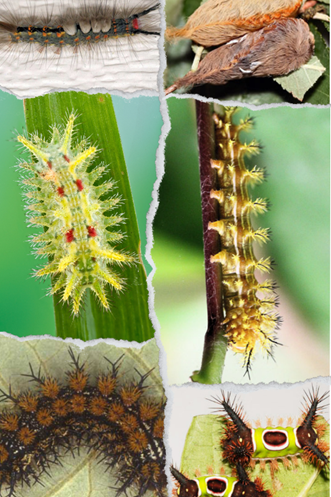As the warmth of spring envelops the air and draws us outdoors, we're not the only ones venturing into the sunshine. Along sidewalks and up oak trees, you may have noticed tiny balls of fuzz scurrying about. These are none other than caterpillars, eagerly seeking a spot to pupate. However, amidst their seemingly innocent appearance lies a potential hazard: the stinging caterpillars of Texas.
Identifying the Culprits
Texas is home to six types of stinging caterpillars: the buck moth caterpillar, spiny oak caterpillar, hickory tussock moth caterpillar, saddleback caterpillar, io moth caterpillar, and the notorious asp caterpillar. While these caterpillars may appear fuzzy and charming, their seemingly harmless exteriors belie a hidden danger. Covered in hair-like spines connected to poison glands, these creatures inject venom when their spines encounter skin.
Seasonal Encounter Patterns
Data from the Texas Poison Network indicates that encounters with stinging caterpillars are most prevalent from spring through late fall. The frequency of encounters tends to spike in early spring, peaking in July, and again in October and November. Found primarily in heavily wooded areas, these caterpillars favor trees such as oak, pecan, elm, and blackberry.
Managing Encounters
Despite their menacing reputation, encounters with stinging caterpillars seldom result in serious issues or fatalities. Approximately eighty-nine percent of symptoms reported to the Texas Poison Center
Network are related to dermal issues and can typically be managed at home. Symptoms may include swelling, redness, numbness, intense itching, and burning at the sting site.
First-Aid Measures
If you find yourself on the unfortunate end of a stinging caterpillar encounter, swift action can help alleviate discomfort. Begin by removing the stinger using tape applied to the sting site. Once the stinger is removed, wash the affected area with soap and water. Applying an ice pack can help reduce swelling, while taking an oral antihistamine can provide relief from itching.
As you enjoy outdoor activities this spring, remain vigilant and mindful of these stinging caterpillars. With caution and preparedness, you can enjoy the beauty of nature while avoiding potential encounters with these prickly adversaries.
For poison questions or poison emergencies call 1-800-222-1222.
If you are having difficulty breathing or you see a person down, and not breathing, call 911.



